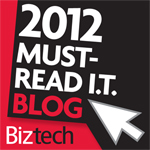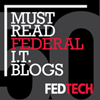I recently spent a few days with several CIOs and IT leaders at an MIT Center for Information Systems Research briefing. Prof. Wanda Orlikowski led a discussion around some early work exploring the uses and value of Web 2.o technologies in the enterprise. For purposes of our conversation, we defined Web 2.0 technologies as those that enrich connections between people (a much simpler, but consistent take on Tim O’Reilly’s version). Specifically, we discussed the use of things like wikis, blogs, micro-blogging, social networks and virtual worlds.
During the discussion, two kinds of corporate cases emerged:
- IT is getting hammered by a flood of Web 2.0 requests from all over the business
- IT has prohibited all use of Web 2.0 technologies
The first case is the one that we spent the majority of our time talking about. What we decided is that in order to stop the flooding, some kind of prioritization is needed. Since Web 2.0 is about improving connections and interactivity, it makes sense to think about prioritizing based on the major communication channels for an organization.
With a communication channel map, each of the links could be prioritized using factors such as the quality of the current communication for the channel and how important the channel is to the business. This kind of analysis would form a simple Web 2.0 strategy that could be used to prioritize the incoming requests.
An additional consideration is the exposure an enterprise might have if its employees, acting in their role as “person,” expose sensitive company data on their personal Facebook, MySpace or LinkedIn pages. (Sorry, I couldn’t come up with a better name for the personal hat someone wears. Maybe you’d like “human” better?) While it is difficult to tell an employee what they can or cannot do at home, it may be wise to create a set of guidelines for personal Web 2.o use.
So, if you are suffering from the Web 2.0 flood, do yourself a favor and get a life raft.
Did you enjoy this article? Please subscribe to CIO Dashboard to receive the latest posts!



Pingback: CIO Guide to Social Media — CIO Dashboard
Pingback: 7 Great iPad Apps for CIO — CIO Dashboard